This entry is part of the 52 Ancestors in 52 Weeks series. This week’s prompt is School Days. (To see other posts in this series, view my 52 Ancestors in 2019 index.)
Ogden School sits in the middle of the Liddieville community — right at the intersection of LA-135 and LA-870 in Franklin Parish, Louisiana. Once the center of community life, this beloved school educated three generations of my family.
I attempted to count just how many of my family members attended or graduated from Ogden, but I quickly lost count. Here was my best attempt:
- I attended Ogden from kindergarten through 8th grade (1986-1995).
- Both my parents spent all their school years at Ogden — my dad was Class of 1965; my mom, Class of 1970.
- My grandfather James Paul Smith, Sr. attended all grades at Ogden and graduated in 1943.
- My grandmother Ethel McMurry also attended Ogden, possibly from 1922-1932, according to 1940 census data.
- 8 of my great-aunts and great-uncles attended or graduated from Ogden.
- 13 of my aunts and uncles attended or graduated from Ogden.
- At least 7 of my first cousins attended Ogden.
- My first cousin, once removed Charles “Cuz” Horne taught high school science and coached basketball at Ogden in the 1960s. He was also a Franklin Parish school board member and a parish school administrator.
And even more relatives and extended family members had connections to Ogden. If their last name was Horne, Johnston, McMurry, Ritchie, Smith, Wiggins, or Wright — they’re probably my family! I can also claim a few Ogden cafeteria workers, janitors, and bus drivers.
Ogden is special to me both for its place in my family history and because I spent most of my school years there. I also watched as our community fought to keep Ogden open during school consolidation in the 1990s and mourned as it died a slow, bureaucratic death in the years that followed.
Several small schools pre-date Ogden in the Liddieville community. These include the Excelsior School (1874) and Big Creek School (1881), followed by a school that met in a cabin on a plantation (1893). To be recognized as a school by the Franklin Parish Policy Jury — the parish government — schools had to enroll a minimum of 10 pupils. Two underage children attended classes to meet this requirement.
Once recognized as a parish school, a one-room schoolhouse was erected at the site of Tom Richardson’s home in 1897. This property is more likely remembered by today’s Liddieville natives as Jacob Elijah “Lige” Richardson’s home place. It was located in the present-day 300 block of Boeuf River Church Road, on the north side of the road just past the drainage ditch. The school outgrew the building by 1903, and it moved to the Methodist church. They met in the old, two-story white church building that was located on the northwest corner of LA-135 and LA-870, in the same spot as Liddieville Free Methodist Church (now Redemption House Ministries).
The school continued to grow and relocated again in 1905 to a two-room building across the road from the school’s present-day location at 2212 Highway 135, Winnsboro. A third room was added in 1911. Sometime between these moves, the school became known as Ogden School, named after the W. D. Ogden family, one of the earliest families in Ward 8. (Liddieville is named for his daughter Liddie.) After a bond issue was approved by parish voters in 1915, the school moved across the road to its final location.

Ogden School added grade levels and became a junior high in 1920, and expanded to a complete high school, teaching 1st through 12th grades, in 1922. As population in this area of the parish grew, school enrollment increased, and more buildings were constructed for classrooms and extracurricular activities:
- The original two-story brick school building was erected sometime between 1915 and 1920. I’ve heard stories that the second floor was sometimes used to house families when backwater and flooding happened in the community — perhaps even during the 1927 flood.
- The gymnasium was completed in 1938, and the Class of 1938 was the first to hold graduation there.
- The home economics cottage — which later held kindergarten classes, including mine — was also completed in 1938. Students sold lunches to construction workers to raise money for its linoleum floor.
- In the 1940s, the original brick school building was remodeled and its second story removed. The elementary school building was also constructed at this time.
- The remaining one-story original school building was demolished in 1963-64 and replaced with the final high school building. The gymnasium was also enlarged to accommodate more people for school events. My dad’s class — Class of 1965 — was the first to graduate from the larger gym.
- The final cafeteria was built in 1976-77, along with some improvements to the elementary building.
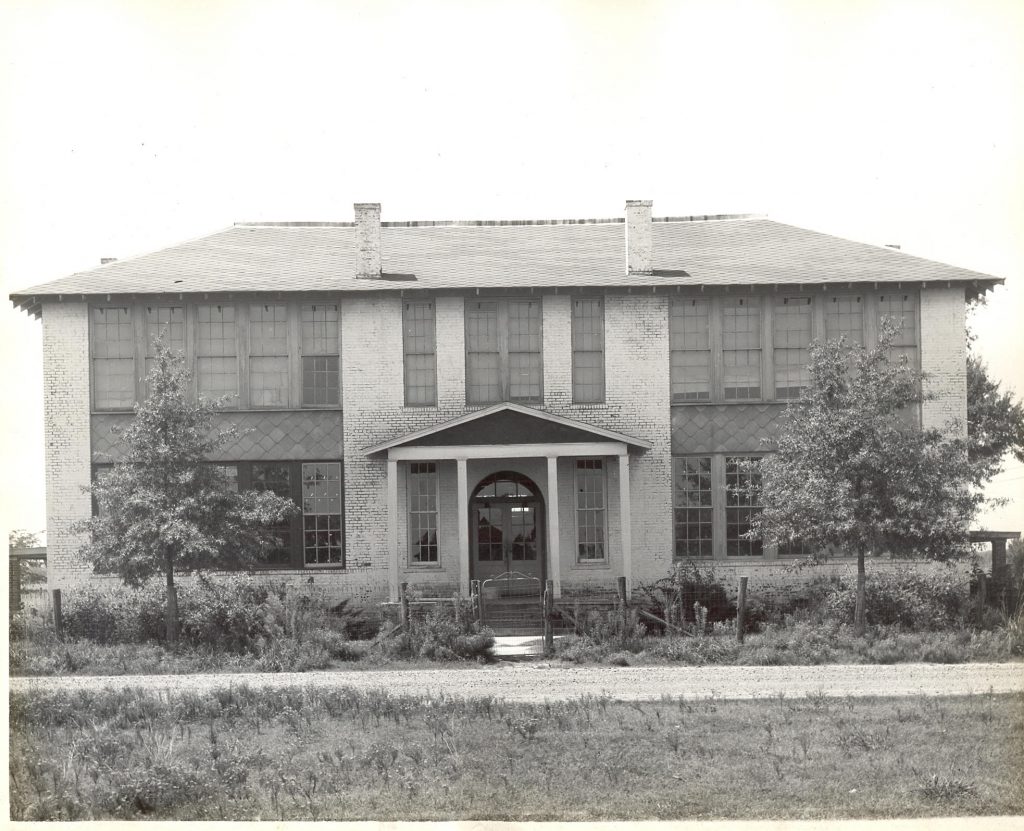

Despite being a small, rural school, Ogden opened doors of opportunity for its students. By 1935, 75 students had graduated from Ogden; 48 percent of these graduates went on to college. What a remarkable achievement in the midst of the Great Depression! A total of 20 students went into the teaching profession from these early classes, including my great-uncle Thomas Leonard Smith, Jr. (Class of 1935) who was a teacher, coach, and principal in the Rapides Parish School System.
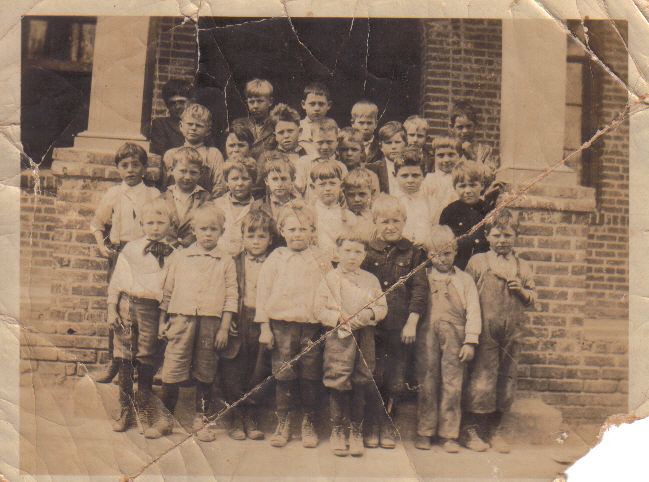
Ogden was a campus with innovations. The Red Cross setup a test kitchen at the school in 1931, and ran an experiment with 1st, 2nd, and 3rd graders to determine if providing daily hot lunches would help impoverished children gain weight. My grandfather James Paul Smith, Sr. was in the 1st grade group. His class started the experiment underweight by 71 pounds, and they gained 45 pounds in the first month. The results of this experiment helped the Red Cross understand how to provide nutrition for communities in need; it may have also shown the benefits of school lunch programs which did not exist in this era. Ogden was also the site of the first state-funded kindergarten in Franklin Parish. The program began in the 1968-69 school year.
Ogden students also received regional and state recognition in music and choral performance and had many acclaimed basketball teams over the decades. My mom her siblings played on several of these winning teams from the 1960s through 1980s. In fact, my mom learned she would be getting another brother or sister because the basketball coach slipped up one day and said to her: “I hear your mother will be giving us another ball player soon!” It actually turned out to be two basketball players — my twin uncles Roger and Rodney.
I do not have a list of all the basketball teams’ accolades, but I wish I did — maybe some kind commenters will respond with their memories. However, I do faintly recall attending the 1984 state championship game when my Uncle Donald played for the Class C title. My grandparents rode with me and my parents in our big Ford Econoline van to Louisiana State University in Baton Rouge. My toddler self was more interested in seeing Mike the Tiger than watching my uncle play the most important game of his high school career!
Basketball was also an important outlet in the Ogden community for remembering one of its lost sons: Charles Hawsey. Hawsey was a 1945 Ogden graduate and was the first Franklin Parish casualty of the Korean War. The school organized a memorial basketball tournament in his honor, which ran continuously from 1950 through the 1990s. Area high schools and independent mens’ and womens’ teams competed in the week-long winter tourney — a huge social event in Liddieville and the surrounding communities.
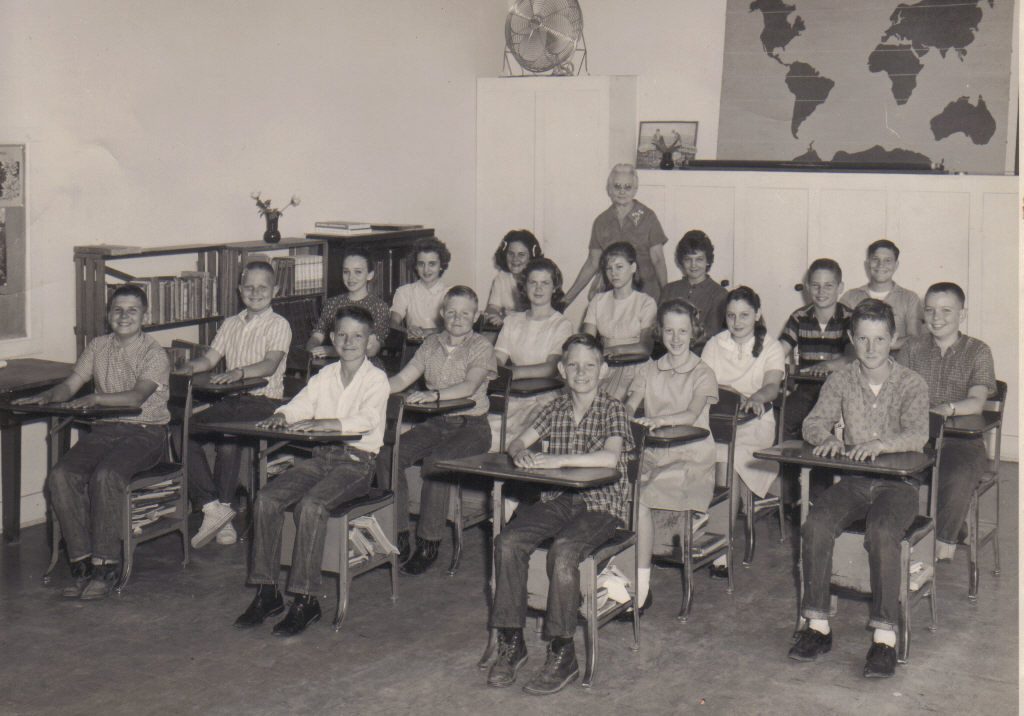
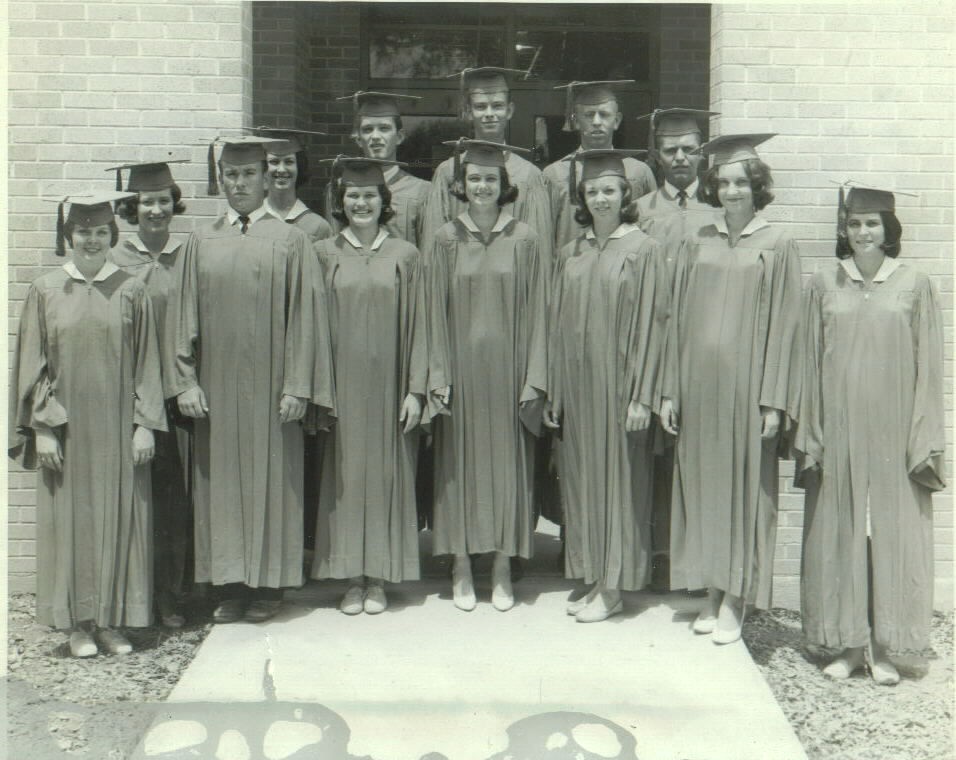
Ogden was an all-white school until Fall 1970 when Franklin Parish schools were desegregated. Like many school systems in Louisiana and across the South, this desegregation was not voluntary, but was mandated by the United States Department of Justice. United States v. Franklin Parish School Board was filed on May 1, 1970. The desegregation order’s immediate result was integration of all Franklin Parish Schools. The order also established Justice Department oversight of attendance zones, student and teacher assignments, transportation, and extracurricular activities. The goal was for all schools within the district to reflect similar racial demographics, and the school board was required to report annually to the Justice Department on its progress.
But progress was slow. Although schools in each Franklin Parish community were desegregated, racial balance was not achieved due to settlement patterns within the parish. Rural areas were populated with more white families, while many African-American families were centered in the town of Winnsboro. The school board allowed majority-to-minority school transfers — an option in which students of a majority race could choose to attend school where they were a minority — but these transfers did little to balance demographics. The Justice Department focused mostly on faculty/staff desegregation in the 1980s, but turned its attention to student demographics in the 1990s.
By the 1990s, the population of Franklin Parish had decreased, resulting in less funding from the state government for education and a decreased tax base. Voters in Ward 8, the Ogden school attendance zone, compensated by passing a special property tax on its residents to support the school — but even that wasn’t enough. The school board couldn’t keep up with maintenance on so many physical buildings. I vividly remember returning from Christmas break my fourth grade year and opening the classroom door to find the roof collapsed on top of our desks. The Justice Department also began placing pressure on the school board to make more progress toward racial quotas in these years. The result for Ogden was elimination of 9th – 12th grades beginning with the 1993-94 school year.
I was in the seventh grade when the high school closed. My parents were part of a community group that organized meetings, collected signatures on petitions, and attended school board meetings to voice dissent in the months leading to the decision. It was my first exposure to such political processes, and it’s stuck with me for all these years. I was an optimistic child who was convinced our community could change the minds of elected officials, but my heart was broken when Ogden was closed anyway — both a financial decision and one forced by government officials in Washington, DC.
After the closure of the high school, 9th – 12th grade students zoned to Ogden were allowed to attend any of three neighboring high schools: Baskin, Winnsboro, or Fort Necessity. I made my decision like any teenager would — I chose the opposite of the classmates I wanted to avoid. I attended Baskin High School my freshman and sophomore years (1995-97) until further Justice Department action eliminated all but three high schools in Franklin Parish. I then attended Winnsboro High School for my final two years of school.
Ogden remained a K-8 school from 1993 until 2000 when it was designated a primary school for pre-kindergarten and kindergarten classes only. Students in 1st – 8th grades were sent to Fort Necessity School. After a small fire in the spring of 2003, the Franklin Parish School Board decided the expense of repairing the building was too much. Ogden was closed permanently in May 2003.
Ogden’s closing and Franklin Parish school consolidation affected me in significant ways. It’s shaped much of my political philosophy and complicates how I view my own children’s school district in metropolitan Houston. United States v. Franklin Parish School Board was not settled until August 2013, when the courts finally decided the school system had reached unitary status. Racial demographics for students and teachers were never balanced at some schools, but court precedent since the 1990s has recognized that
“the Court need not employ ‘awkward,’ ‘inconvenient,’ or ‘even bizarre’ measures … to achieve racially balanced school assignments ‘in the late phases of carrying out a decree, when the imbalance is attributable neither to the prior de jure system nor to a later violation by the school district but rather to independent demographic forces.”
United States District Court, Monroe Division, Civil Action No. 70-15632, United States v. Franklin Parish School Board, “Ruling,” 6 Aug 2013; digital images, ClearingHouse.net (https://www.clearinghouse.net/chDocs/public/SD-LA-0017-0004.pdf : accessed 9 Sep 2019).
Basically, the courts realized it’s impossible to get equal racial demographics across an entire school district when people have free choice in where to live and can choose to self-segregated in neighborhoods or in public vs. private school choice. And that it’s been a long time since the initial desegregation order, none of the schools are configured the same as 1970, so let’s just call it a day.
Where was that decision when I was a child? I watched our community school in which students of all races got along with relative ease be dismantled and students sent to a high school where the demographics looked good to the federal government but racism ran rampant with segregated proms, segregated awards categories, and segregated recess areas. Where was the justice in this? Why did our community schools have to suffer?
The buildings which made up Ogden School have sat vacant for 16 years, and the campus is in a sad state of disrepair. What was once the pride of the Liddieville community is now an eyesore. I think the only way the community stomachs its sad condition is because they remember the good times at Ogden. The school has an active alumni community, with many of the older generations meeting bi-annually for class reunions. The younger generations have Facebook groups in which they share memories and reminisce about their school days. I cherish my own memories of Ogden and what the school has meant for three generations of my family.
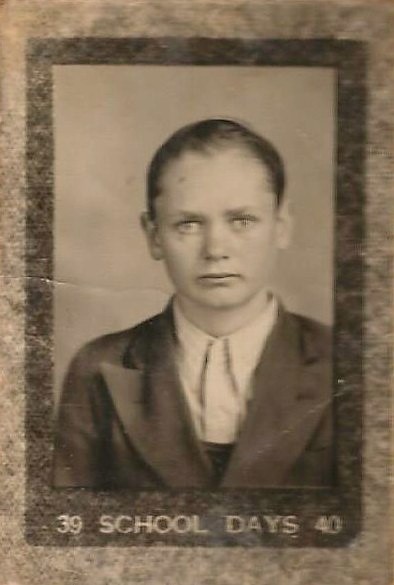

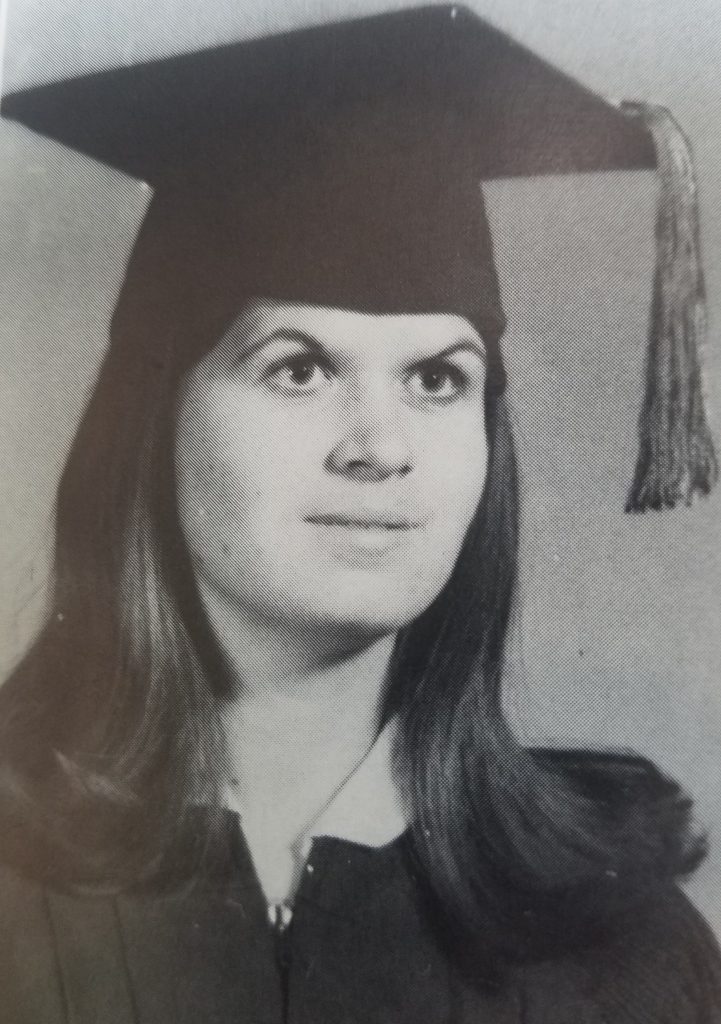
Ogden High School Class of 1970
Much of my information for this post was gathered from the Ogden alumni website compiled by my father John Horne. His website contains more history and photos of Ogden School.
Other information is from my own memories of Franklin Parish School consolidation and the following sources:
“Franklin Expects Sales Tax To Boost Its 1969 Prosperity” The Monroe (Louisiana) News-Star, 31 Dec 1968, p. 10, col. 4; image copy, Newspapers.com (https://www.newspapers.com/clip/35556462 : accessed 6 Sep 2019).
“Ogden to Hold Hawsey Tourney” The Monroe (Louisiana) Morning World, 31 Dec 1950, p. 10, col. 2; image copy, Newspapers.com ( https://www.newspapers.com/image/86922488 : accessed 6 Sep 2019).
“Soup Kitchens In This Parish Prove Value” Caldwell Watchman, 15 May 1931, p. 3, col. 4; image copy, Newspapers.com (https://www.newspapers.com/clip/35556708 : accessed 6 Sep 2019).
United States District Court, Monroe Division, Civil Action No. 70-15632, United States v. Franklin Parish School Board, “Ruling,” 6 Aug 2013; digital images, ClearingHouse.net (https://www.clearinghouse.net/chDocs/public/SD-LA-0017-0004.pdf : accessed 9 Sep 2019).

Such a sad story. I didnt realize there were still issues relating to segregation occuring even into the recent past: there were never any real issues at my HS here in Ohio.
My mom was proud of her school and sang in the choir. I think my sister may have her school ring from the class of 39. And my Pappaw Johnston drove school bus for Ogden.
Very, very interesting and well written article. I am from a family of 12 children that ALL graduated from Ogden and I have taken my daughters back in the last 10 yrs and toured what is left of the facility and find it so sad! My mother, Rethie Womack worked as an aid in the special need building located behind the original building for many years after my dad died leaving her with 4 children to finish putting through school. I will forever be grateful to Mr. Ray Bryan, the principal at the time, for giving her the opportunity to work and provide for her family. Her last child graduated in 1981 and she retired a few years later. We had several excellent ball players ourselves, me not one of them LOL, that played in many of those Hawsey tournments and championships. One of the things that was heart breaking to see was all the many, many, many trophies that held so many memories, were destroyed and left behind. After a tour of the school, taking my children and reminiscing through each building and classroom, you realize time goes on…and for mine..at a much faster pace.
I to attended school there frow 66- 74 before moving I went back yesterday lots of memory’s Brenda renew chevalier
I went to Ogden in the first grade and then came back at mid-term of the 10th. I graduated in 1974. I was blessed to graduate there. My Dad Charles “Cuz” Horne. My 5 siblings graduated there. My Mom graduated from Crowville. Thank you for all the information. I appreciate your Dad putting all the effort to inform us.
I am Lary’s sister Clarice (aka Boo Boo). I graduated 1980. I would make one correction with respect to our Dad (Cuz). He was never a school board member. His father, JC Horne, was. Daddy was a Coach, Teacher, Principal at another Franklin Parish school and ended his career as a staunch student advocate as the Supervisor of Child Welfare and Attendance.
I love to share this story about your Dad. In short, without him, I wouldn’t be here today. He is the man who introduced his Johnny Rusk basketball teammate to Mary Frances Wiggins at the Ogden High School gym . The man was my father Lynn Parker. I’ve shared this story with a Mrs Dugdale after her grandson Brady began dating my granddaughter Emily. Small world.
Your Ogden High School blog was so very well written, interesting, informative, and brought back many memories. My mother graduated about 1929, and my three older sisters were there for their full 12 years. My oldest sister played on the basketball ball team along with Hazel Fain Beard ( previous mayor of Shreveport). I graduated 1969 from Fort Necessity. The old photos really brought back memories! Great job on all your research!
I attended Ogden As well. Senior class 1985. I have a Facebook page set up and would love to post this stuff. Someone I went to school with purchased the school. I would love to see the school cafeteria opened up as a cafeteria and the gym re-opened for reunions and get togethers and basket ball. And to see our trophies displayed. What’s left of them.
Very well written. I was the class of 84. Went through high school with all the “Smith Boys”. I had the great honor of being the last high school coach at Ogden when they closed the high school.
I attened Ogden High School and still have fond memories. I was the class of 1964.
Kathleen, I grew up in Waterproof, , and one of my clearest memories is playing in a basketball tournament in an old gym in Liddieville, in the early 1060’s. During the tournament, it started to snow, and by the time our boys finished their game, early afternoon, it was really coming down and starting to stick. We talked our coach into stopping the bus and let us play in the snow. It was a big field in front of a school building, I think. We didn’t stay long. The coach worried that we would get caught in the snow storm, and we did! The bus was slipping all over the road, so he stopped the parents in cars, and we all piled into the cars, and literally inched our way to Waterproof. It was dark by then, and what should have been about an hour drive, turned into several. We didn’t get back until after midnight, and found the school parking lot full of worried parents and friends. Of course, we had no cell phones to let them know we were ok. I think about that incident often.
I was music director for Liddieville Baptist church in the early 1950s when Bro. Bucklew was pastor. I remember a youth named Noel who attended, also Douglas Comeaux as well as a red headed kid whose name I can’t recall. Are any of them still living. I think some of them went to Ogden. I commuted to La. College, so didn’t know the community that well. BUT those were excellent young people. If any of them are still around tell them to e-mail me at address below. I live in Jonesboro, AR, retired from teaching at AR State. Alden “Al” Presley
I was in the class of 77 and it was a very good experience in Ogden High School, made a lot of friends there, and to this day think about my School days back then and the friends I made thank for such a great experience in my life,
BILL LOFLIN
Just wondering if you are the Bill Loflin whose daddy is named Jacob from the Loflin family of Loflin rd right there in downtown Liddieville , you may be my cousin
Ok
I just found this school photo collage thrown away. The top left photo says 1942 Ogden LA.
The comment box won’t let me post the photo.
Thanks for reaching out! I will email you to check out the collage! My father runs the Ogden alumni website and would love to see the collage, too.
Jessica, I sure wish you’d write more of there! You’ve certainly touched a lot of people; many relatives but many who reminisced the region and people too. That you are a talented writer only adds to the blog!